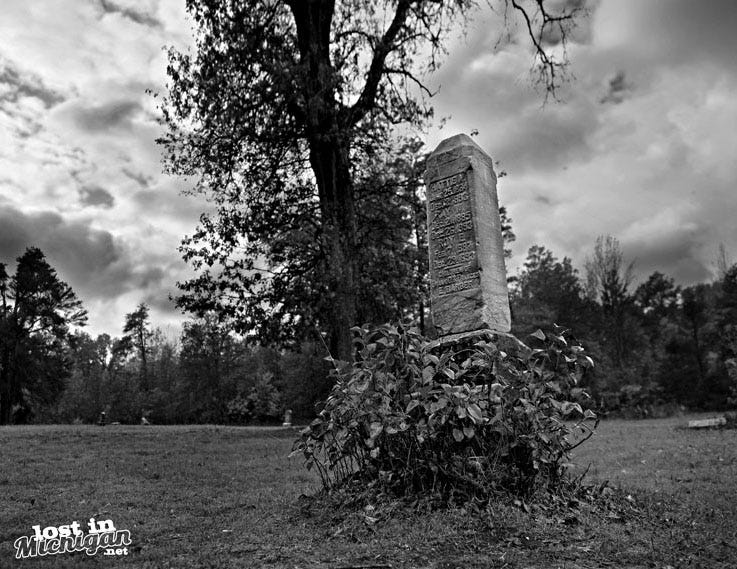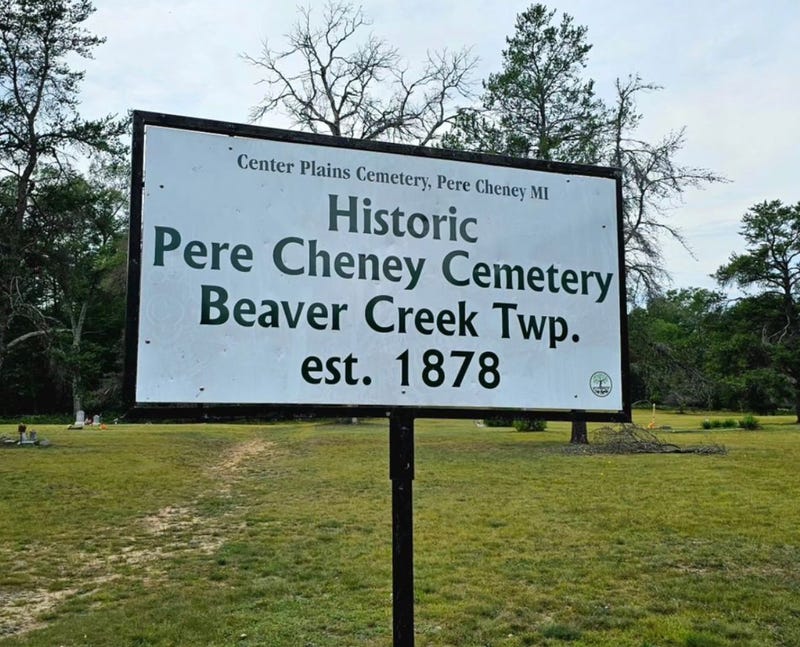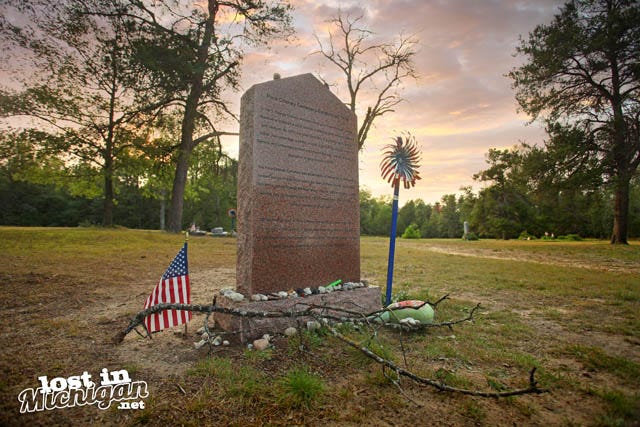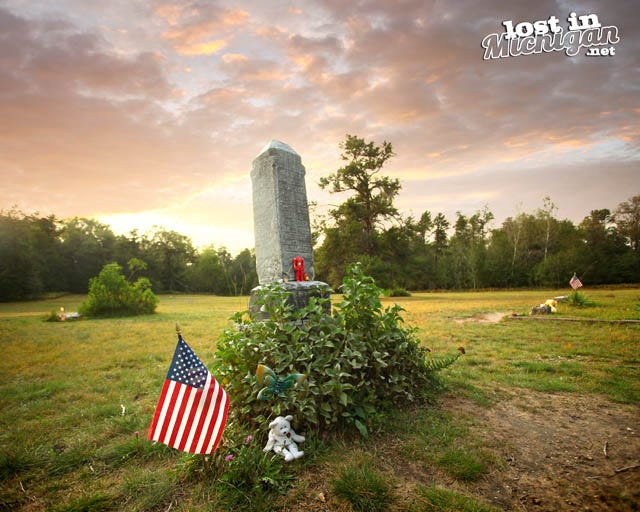
CRAWFORD COUNTY (WWJ) – Tucked away in northern Michigan are the remains of a desolate village that was exposed to so much tragedy and bad luck that one might say it was cursed.
…And they might be right.
On this special spooky episode of The Daily J podcast, WWJ’s Zach Clark and Annie Scaramuzzino explore the hauntings of Pere Cheney, and find out how this once-bustling city became a ghost town – possibly in more ways than one.
Pere Cheney is located just a few miles southeast of Grayling in Beaver Creek Township, though the village has been completely abandoned since 1917.
In 1874, George Cheney founded Pere Cheney after receiving a land grant from the Michigan Central Railroad Co. to establish a stop along the railroad, which was then called the Mackinac Line and ran from Bay City to Mackinac City.
The village of Pere Cheney had a general store, sawmills, a hotel, a post office and a doctor, among other things, and supported the logging industry.
But things began to take a downturn for Pere Cheney during an election to determine which city would be the county seat of Crawford County.
Because the election was held in Grayling, turnout from Pere Cheney residents was low, due to the fact that they had to walk 12 miles just to cast their vote. As a result, Grayling won the election, becoming the county seat.
In 1881, Pere Cheney was passed by once again when the headquarters of Michigan Central Railroad Mackinac Division was established in Grayling, giving the neighboring town another boost.
Additionally, Grayling – unlike Pere Cheney – had the advantage of the Au Sable River, which supplied water power to run mills in the city.
Meanwhile, when the majority of the trees had been cut down for logging in Pere Cheney, there wasn’t much industry left in the area, and its sandy soil wasn’t really conducive to agriculture.

At its peak, Pere Cheney was home to about 1,500 people, but that changed drastically in 1893 when diphtheria spread through the town, wiping out much of the population.
Bad luck struck again soon afterwards when fires broke out in the village, causing devastating damage. Some say the fires were caused by sparks from nearby mills, but a much darker theory suggests people from neighboring towns intentionally set Pere Cheney ablaze to ward off the further spread of disease.
Still, diphtheria returned to the town again in 1897, and by 1901 the town's population had dwindled to 25. Then, in 1917, with the population under 20 people, the land was sold in a public auction, and it was curtains for Pere Cheney.
All that remains of the ghost town today is the Pere Cheney cemetery, which is located about a mile outside the city and regarded as being one of the eeriest places you can visit in Michigan.
The cemetery, where about 90 people were buried, certainly possesses its fair share of ghost stories, but perhaps the most famous is the legend of the witch.

The story goes that a single woman with a child who lived in Pere Cheney was banished into the woods by the townspeople who disapproved of her lifestyle and accused her of being a witch.
Out in the elements, the woman’s child was unable to survive, and so she cursed the village and its children. Many blame her curse for the ensuing outbreak of disease and the disastrous fires, and say her spirit still lingers within the cemetery.
Some local residents of Crawford County believe the story of the witch was based on a real woman, but due to the fire that ravaged the village, there are no records that can confirm her existence.
Meanwhile, others say that Pere Cheney was doomed from the start because it was built on Native American land, leading to the alleged curse.
Another widely-believed sentiment among the local community is that Pere Cheney cemetery is haunted.
Visitors have claimed to see ghosts, glowing orbs and mysterious lights in the trees. Some have also reported hearing voices and children laughing, and discovering small handprints on their cars.
Mike Sonnenberg, founder of the travel website and book Lost in Michigan, has ventured out to the cemetery, and notes that while he’s not a believer in the supernatural, he can see how people might be impacted while visiting the area.
“It is kind of surreal or creepy because it’s separated out in the middle of nowhere,” Sonnenberg said. “It’s a really secluded cemetery. Being really isolated is something I think that adds to its vibe or its creepiness.”

Gail Thomas, President of the Crawford County Historical Museum, says visiting the cemetery is a right-of-passage for local residents — but she won’t be going again anytime soon.
“I’ve seen polaroid pictures with partial apparitions…one polaroid picture I’ve seen of a group of individuals that were out there [and] had gremlins that were standing around them...freaked me right out,” Thomas said. “I’ve been out there once, and that was enough for me.”
In the end, the village of Pere Cheney was only inhabited for just over 40 years, but certainly harbored enough tragedy to last several lifetimes.
Whether it was a curse from a witch, or simply a series of unfortunate events that ultimately led to Pere Cheney’s downfall – well, we’ll let you decide.
